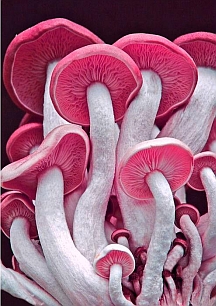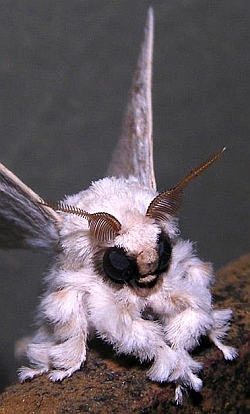The Malgrandegulos
 On Elanor, the Eugenics Commissars needed a durable race that could survive underground for long period of times. Gengineering resulted in the malgrandegulos, a stoic race famous for their love of both money and combat. Instability in the malgrandegulos genome has resulted in the speciation of a new race, the koboldo.*
On Elanor, the Eugenics Commissars needed a durable race that could survive underground for long period of times. Gengineering resulted in the malgrandegulos, a stoic race famous for their love of both money and combat. Instability in the malgrandegulos genome has resulted in the speciation of a new race, the koboldo.*
Appearance and Biology: This race tends to be squat, broad, and heavy. Males are seldom taller than 5 feet and weigh on average 150 pounds. Females are somewhat shorter and lighter. A malgrandegulo’s arms reach to just past his knees, and they are usually well-muscled with powerful shoulders. Malgrandegulos tend to have short, bowed legs that cause them to move with a rolling gait. This race tends to be hirsute; facial hair is ubiquitous among males and common among females. Earth tones dominate malgrandegulo eye and hair color, but many malgrandegulos watch their hair go gray to white by middle-age. Skin color ranges from ruddy to bronze.
Psychology: The malgrandegulos share strong common psychological traits that often make them difficult to tolerate. Status among malgrandegulos is almost universally measured by the successful accumulation of wealth and by demonstrated martial prowess. While it might seem as if these traits would lead to widespread double-dealing and violence, the malgrandegulos have learned to hide their true intentions behind facades of bland, patient gentility. A malgrandegulos seldom says what he means. Instead, he remains vague, noncommital. At the same time, he takes stock of what he sees and hears, making careful mental notes about the possible true intentions of others. These elaborate charades of respect and civility between malgrandegulo individuals and groups can go on for months, even years. Then, when the time judged right, the machinations are revealed, and to the victors go the spoils.
While malgrandegulos plot revenge for offenses real or imagined, outright blood feuds are rare. Since status is gained by financial and military success against rivals, malgrandegulo social norms strongly reinforce a stoic attitude about defeat. When one is bested, the sensible thing to do is acknowledge the winner’s superior cunning and strength. Of course, any self-respecting malgrandegulo will also plot ways to get even…eventually.
Flavor: A malgrandegulo is an honorable schemer, and many who manage to leave Elanor for the wider sector find themselves in diplomatic service or public relations. Everyone knows that a malgrandegulo can’t be trusted farther than he can be thrown in normal gravity. At the same time, malgrandegulos tend to excel at saying no more than what needs to be said, if that much.
A malgrandegulo’s love of wealth and martial prowess may also lead him into more aggressive occupations. Companies of malgrandegulo mercenaries tend to be both well payed and feared, and quite a few wealthy people employ malgrandegulo bodyguards. Some companies, especially those involved in the mining industry, recruit and employ malgrandegulos as both workers and security personnel.
Racial Traits: Malgrandegulos move up 45 feet per round (rather than 60 feet). Although slow, a malgrandegulo is built for portage. He can have up to four additional items can be carried ready or eight additional ones stowed at the cost of becoming Lightly Encumbered, and having his base movement slowed from 45 feet per round to 30 feet per round. A further two items can be carried ready or four stowed at the cost of becoming Heavily Encumbered, with base movement then reduced to 15 feet per round.
Malgrandegulos are good at spotting traps, unsafe cave formations, slanting passages, and new construction while underground. Malgrandegulos gain a +1 bonus to Perception skill checks to detect such things. Malgrandegulos use neither magic nor psionics. They are, however, resistant to magic and psionics, gaining a +4 bonus to saves against such effects.
A malgrandegulo’s natural vision is equivalent to low-light goggles. Consequently, malgrandegulos have difficulty with normal levels of illumination. Without protective lenses in such conditions, malgrandegulos suffer a -1 penalty to sight-based Perception skill checks and a -2 penalty to saves against attacks that blind or disorient via bright light.
A malgrandegulo character must have at least a 13 Strength and 13 Constitution, and he cannot have higher than a 14 Charisma. They cannot be wizards or psychics.
* Most koboldo newborns are destroyed at birth, but a substantial number of malgrandegulos have refused to cooperate with imperial racial sanitation codes. As a result, many of Elanor’s deeper subterranean places are infested by koboldos.
 Another one from the xenobestiary for Tiamat’s Throne, my
Another one from the xenobestiary for Tiamat’s Throne, my  My
My  Yet another
Yet another  Adharan Ghost Moth
Adharan Ghost Moth